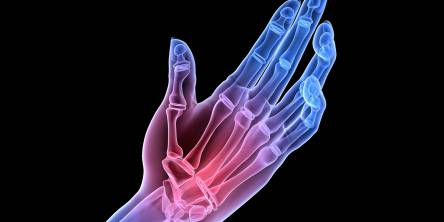Best Aesthetic Medicine Courses: Discover Premier Training Opportunities

Choosing the best aesthetic medicine courses will significantly boost your career. Medical professionals looking to expand their practice and stay ahead in the field of aesthetic medicine will find these training programs invaluable. Whether you are a physician, nurse practitioner, or healthcare professional, there is a course tailored for you.
The Benefits of Aesthetic Medicine Training
Aesthetic medicine offers numerous benefits for both practitioners and patients. Comprehensive training courses provide hands-on experience, which is crucial for mastering techniques such as botox injections, dermal fillers, and chemical peels. The courses also cover advanced procedures like stem cell therapy and hair transplant, ensuring you are well-versed in the latest techniques.
Enhancing Skills and Knowledge
Training programs are designed to enhance your skills and knowledge in various aspects of aesthetic medicine. Courses cover facial anatomy, patient selection, and the aging process, ensuring you understand the intricacies of facial aesthetics. The knowledge is essential for providing high-quality care and achieving optimal results for your patients.
Hands-On Training
Hands-on training is a key component of aesthetic medicine courses. Working with live patients and models, you gain practical experience that theoretical knowledge alone cannot provide. The hands-on practice is invaluable for building confidence and proficiency in performing procedures.
Choosing the Right Course
Selecting the right aesthetic medicine training course is crucial for your success. Here are some factors to consider:
Accreditation and Certification
Ensure the course is accredited by a recognized body and offers certification upon completion. Accreditation guarantees the course meets industry standards and provides quality education.
Experienced Instructors
Learning from experienced, board-certified instructors is essential. The professionals bring a wealth of knowledge and practical insights, significantly enhancing your learning experience.
Comprehensive Curriculum
A comprehensive curriculum should cover a wide range of topics, including botox training, dermal filler training, chemical peeling, thread lifting, and body contouring. Look for courses that offer a balance of theoretical knowledge and practical application.
Flexible Learning Options
Flexibility is important, especially for busy medical professionals. Many aesthetic training courses offer online modules, allowing you to learn at your own pace. The flexibility ensures you will balance your training with your existing practice.
Top Aesthetic Medicine Courses
Here are some of the best aesthetic medicine courses available:
American Academy of Aesthetic Medicine
The American Academy of Aesthetic Medicine offers a range of courses, from basic to advanced levels. Their training programs cover botox, dermal fillers, chemical peels, and more. They provide hands-on training with live patients, ensuring you gain practical experience.
International Association for Physicians in Aesthetic Medicine (IAPAM)
IAPAM offers comprehensive training programs for physicians, nurse practitioners, and physician assistants. Their courses include botulinum toxin training, dermal fillers, and chemical peels. IAPAM also covers advanced techniques like stem cell therapy and hair loss management.
Empire Medical Training
Empire Medical Training is renowned for its extensive range of aesthetic medical training courses. They offer hands-on training in procedures like botox injections, dermal fillers, and platelet-rich plasma therapy. Their courses are designed to equip you with the skills needed for a successful aesthetic practice.
The Aesthetic Society
The Aesthetic Society provides advanced training for medical practitioners interested in aesthetic medicine. Their courses cover everything from basic facial aesthetics to advanced body contouring techniques. They emphasize hands-on experience and patient safety.
Specialized Training Programs
For those looking to specialize, there are courses focused on specific areas of aesthetic medicine:
Botox and Dermal Filler Training
Courses focused on botox and dermal filler training are ideal for practitioners looking to offer these popular treatments. The courses cover everything from facial anatomy to injection techniques, ensuring you can perform these procedures safely and effectively.
Hair Transplant and Hair Loss Management
Specialized training in hair transplant and hair loss management is essential for practitioners looking to expand their services. The courses cover various techniques, including FUE and FUT, providing you with the knowledge and skills to perform these procedures.
Chemical Peels and Skin Rejuvenation
Courses on chemical peels and skin rejuvenation focus on improving skin texture and appearance. The courses cover different types of peels and their applications, ensuring you can offer a range of treatments to your patients.
Non-Invasive Procedures
Training in non-invasive procedures, such as energy-based devices and body contouring, is becoming increasingly popular. The courses provide hands-on training in the latest technologies, allowing you to offer cutting-edge treatments to your patients.
Conclusion
Investing in the best aesthetic medicine courses can elevate your career and enhance your practice. Whether you are looking to gain new skills or expand your existing practice, there is a training program suited to your needs. Comprehensive training, hands-on experience, and learning from experienced instructors are key components of these courses. With the right training, you can provide high-quality care and achieve successful outcomes for your patients.
Frequently Asked Questions
What are aesthetic medicine training courses?
Aesthetic medicine training courses are specialized programs designed to teach medical professionals the skills and techniques needed in the field of medical aesthetics.
Who can enroll in aesthetic courses?
Aesthetic courses are open to medical professionals, including physicians, nurse practitioners, and physician assistants.
What can I expect to learn in a medical spa training course?
In a medical spa training course, you will learn a variety of non-invasive procedures and treatments commonly offered in medical spas.
How do aesthetic medicine training courses benefit my career?
Aesthetic medicine training courses enhance your skills and knowledge, allowing you to expand your practice and offer a wider range of medical aesthetics services.
What topics are covered in aesthetic medicine training courses?
Aesthetic medicine training courses cover topics such as botox injections, dermal fillers, skin rejuvenation, and advanced aesthetic procedures.
Similar Articles
Veins on the skin that produce swelling may indicate varicose veins. Varicose veins are a vein disorder, and their role is to return blood from the leg to the heart. The specific cause of varicose veins, a prevalent condition, is unknown.
A healthy spine is the foundation of a functioning body. It supports your frame while allowing you to bend, flex, and move more freely. However, most people neglect the importance of spine health until they have a back condition.
Whether you're having trouble moving body parts or experiencing worsening joint discomfort, an orthopedic doctor can help. They can treat anything from a minor strain to complex treatments such as shoulder replacement. The appropriate treatment from an orthopedic expert at the right time might relieve your pain and improve your symptoms in less time.
When it comes to trauma, professionals in the mental health sector readily admit that no single style of therapy or intervention is appropriate for every case or individual.
Rheumatoid arthritis (RA) is a type of autoimmune disease that occurs when the body's immune system attacks the lining of joints, causing inflammation and causing symptoms like pain and stiffness. RA usually affects both sides of the body in a similar way, but small joints of the hands and feet are often affected first, often knuckle joints of the fingers.
An electroencephalogram (EEG) is a test that measures the electrical activity in the brain. Healthcare experts utilize it to evaluate and comprehend neurological illnesses, sleep disorders, and brain damage.
So, your back decided to stage a mutiny and gift you with a herniated disc. Lovely. Now what? If you’re imagining a future filled with endless discomfort and groaning every time you get out of bed, don’t fret. There are plenty of ways to tackle a herniated disc and get back to living your best, pain-free life.
Back pain – it’s not just a matter of “I lifted a heavy box, and now my back hurts.” It’s often the result of a complex dance between our minds and bodies, with stress, anxiety, and emotions playing lead roles. If you’ve ever woken up with a stiff back after a tough week or felt your spine twinge just from reading a long email chain, you’re not alone.
Chronic pain is a medical problem that affects many people around the world. Unlike acute pain, which is a short-term response of the body to tissue damage, chronic pain lasts longer, often without obvious physical damage. It can last from several months to several years, and its consequences can affect all aspects of a person's life









